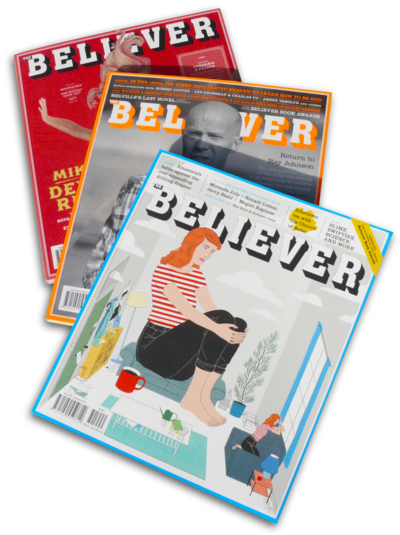
SAN FRANCISCO — What is McSweeney’s? If you know the name, you likely know it through McSweeney’s Internet Tendency, a daily humor site that has published gems like “I’m Comic Sans, Asshole,” “It’s Decorative Gourd Season, Motherfuckers,” and my personal favorite: “YOU ARE THE ONLY HUMAN BEING LEFT ON EARTH NOT IN GRADUATE SCHOOL: A POST-APOCALYPTIC NIGHTMARE.” Like Vice, McSweeney’s began life in the 1990s as a print magazine, but it long ago shifted in certain corners of the popular imagination into a primarily digital concern.
“We’ve been very happy to have the Tendency, which is a publication in its own right, be our digital space for a long time,” Jordan Bass, McSweeney’s executive editor, told me. We chatted at a picnic table in the park across from the company’s Mission District headquarters, as San Francisco stereotypes rolled by (a stream of Lyft Prius cars, people carrying the fanciest cups of bubble tea I’d ever seen).
“And our site has never really been a money-making enterprise at all. It started as this cool place where people send funny stuff, and then some other people read it,” Christopher Monks, editor of the Internet Tendency, said. Monks is based in Boston and sifts through the hundreds of Internet Tendency submissions each week basically alone, with a lift from editor-at-large John Warner, who previously helmed the site. “If anything, the site was kind of a window so that other people could connect with our books and our magazines, and operated in a way to put McSweeney’s online. Then it grew, and it actually grew into a modestly popular humor site.”

 McSweeney’s wasn’t founded with for-profit longevity in mind. It started as a place for Eggers to publish good writing he felt wasn’t being picked up by big magazines, or when he wanted to handle the publication process himself, but it’s now close to 20 years old. Much of its reputation rests on eclectic print products (Fast Company included it on a list of most innovative media companies, for “proving the value of print publishing,” right behind #6, Reddit). Deadpan, Bass described McSweeney’s to me as a “barely digital company.”
McSweeney’s wasn’t founded with for-profit longevity in mind. It started as a place for Eggers to publish good writing he felt wasn’t being picked up by big magazines, or when he wanted to handle the publication process himself, but it’s now close to 20 years old. Much of its reputation rests on eclectic print products (Fast Company included it on a list of most innovative media companies, for “proving the value of print publishing,” right behind #6, Reddit). Deadpan, Bass described McSweeney’s to me as a “barely digital company.”
The universal pressures of increasing interest in digital and mobile and declining interest in many print products loomed, if only peripherally at first. Last fall, McSweeney’s announced it was filing for nonprofit status, a move that formalizes what the company’s always been, as Eggers himself has readily admitted. The change makes it easier for McSweeney’s to accept donations and foundation support. Crowdfunding campaigns have surpassed the team’s expectations, and might well be used again down the line.
 “We were able to build a pretty tremendous amount based on a shoestring, but now we’re getting a little more reactive to the realities of a shoestring business,” Bass said. “We’re not able to reach as far as we want to in some ways — letting The Believer be The Believer, letting the Quarterly be what it wanted to be, and experiment with production and printing formats. All of that is expensive for a little business to take on.”
“We were able to build a pretty tremendous amount based on a shoestring, but now we’re getting a little more reactive to the realities of a shoestring business,” Bass said. “We’re not able to reach as far as we want to in some ways — letting The Believer be The Believer, letting the Quarterly be what it wanted to be, and experiment with production and printing formats. All of that is expensive for a little business to take on.”
For awhile, The Believer’s website was treated as a repository for a selection of print pieces. The tiny team has been thinking about how to build the online archive and make things more accessible, putting out the magazine in ebook form.
“Over the years, I’ve come to see the importance of making sure we can get work in front of as many people as want to read it. When we do put stuff online, authors see a bigger chunk of folks coming to them and reading them, and those are pieces I get more letters to the editors about,” Andi Winnette, McSweeney’s managing editor, said. She started as an intern and now works on The Believer as well as book acquisitions. “That’s great. I think the biggest challenge with that is to figure out a way to balance getting as much work from The Believer as we can to as many people as we can, while still finding a way to support the writers and staff and actually putting the thing out and mailing it to people all over the world — and finding a way to make the digital stuff that, at least, doesn’t make that harder.”The Believer started taking advertisements a few years ago, and the Quarterly Concern has worked a little with advertisers, too. The Internet Tendency started running tiny ads through the small ad network The Deck. The team has also discussed getting certain pages sponsored.
“If you were starting a publication now, you would surely do it differently. You’d have a much more full-bodied Internet side of it,” Bass said. “Certainly, if there’s a path to bringing in more revenue by doing digital, we’d love to do that.” But for McSweeney’s, digital incarnations of meticulously constructed print items had to be similarly distinctive. Print audience numbers are small (but healthy among literary magazines: see details on a few others here). The Believer hovers around 10,000 subscribers, and the Quarterly is just north of The Believer’s numbers.
The Tendency’s biggest hits have gotten millions of pageviews, and many stories do well, reaching tens of thousands. The site was late to social media, Monks admitted, but Facebook and Twitter have since been huge boons since they enable the sharing of archival pieces from pre–social media days. The Tendency is being redesigned to improve navigation and mobile-friendliness, and to better highlight McSweeney’s other offerings. (The team also considered moving to Medium, but chose against it out of concern that its core, indie readership would react to such a change in aesthetic.)
“There are a lot of different audiences that come to our stuff, and there are many, many people who read the Tendency who have no idea that at heart we are a book and magazine publisher, too. At book fairs and conferences, people will come by and say, ‘Oh, you guys do books?!'” Winnette said. “It might be nice for people to have a better sense of everything we’re doing, in case they might be interested in the other arms, but I don’t think it’s a huge central goal. People will gravitate toward the Quarterly if they like short stories, and the Tendency if they like humor. We have freedom to move around and do different stuff, and we love that we have all these different divisions and our readers can pick and choose.”The word “brand” sends a shiver down McSweeney’s editors’ spines, but they do think about growing audience and defining their mission.
“Just as the early Quarterly was sort of this place to publish things that had been rejected by The New Yorker, we ran the things rejected by Shouts and Murmurs,” Monks joked. “But I will say that [The New Yorker is] leaning more on us now. They featured a lot of our writers when they started expanding their online presence.”
Once, if a piece made Monks laugh, it went online. “Now it has to make me laugh and also has to make me feel confident will resonate with a wide variety of readers. I’m thinking about audience a lot more,” he said. “I’ve thought more about stuff that hits close to home — parenting, jobs, living in the city, education, technology. We’ve always catered in subject matter to literature, satire, parodies, the Hemingways, Kafkas. John [Warner] and I have worked to make the humor more accessible.”
Nestled in the shadow of Silicon Valley, McSweeney’s is a bit of an oddity.
“If you sit in one of the coffee shops here for an hour, people are all talking about trying to create this thing that will reach hundreds of millions, hundreds of billions of people, which is a scale that — while we’d be happy to have a billion readers of McSweeney’s — we’re not really aiming for,” Bass said. “We’re definitely working on a different metric. We have a different mindset. Because we have scanty resources, we have to pick our targets. For us, it’s made more sense to focus, to be breakfast — not breakfast, lunch, and dinner.”